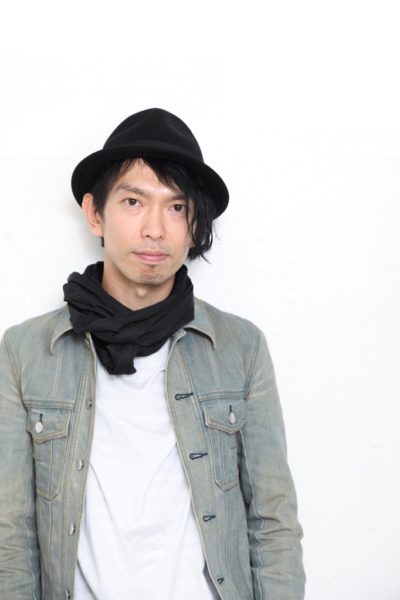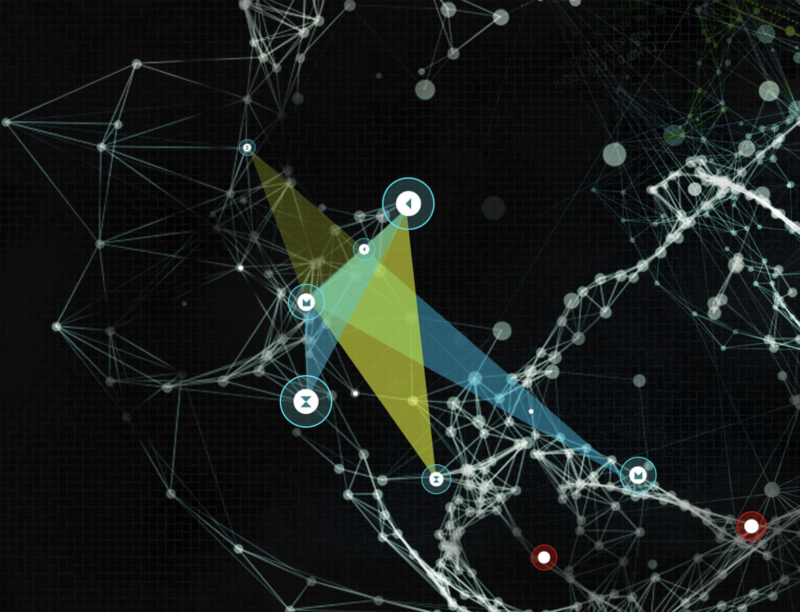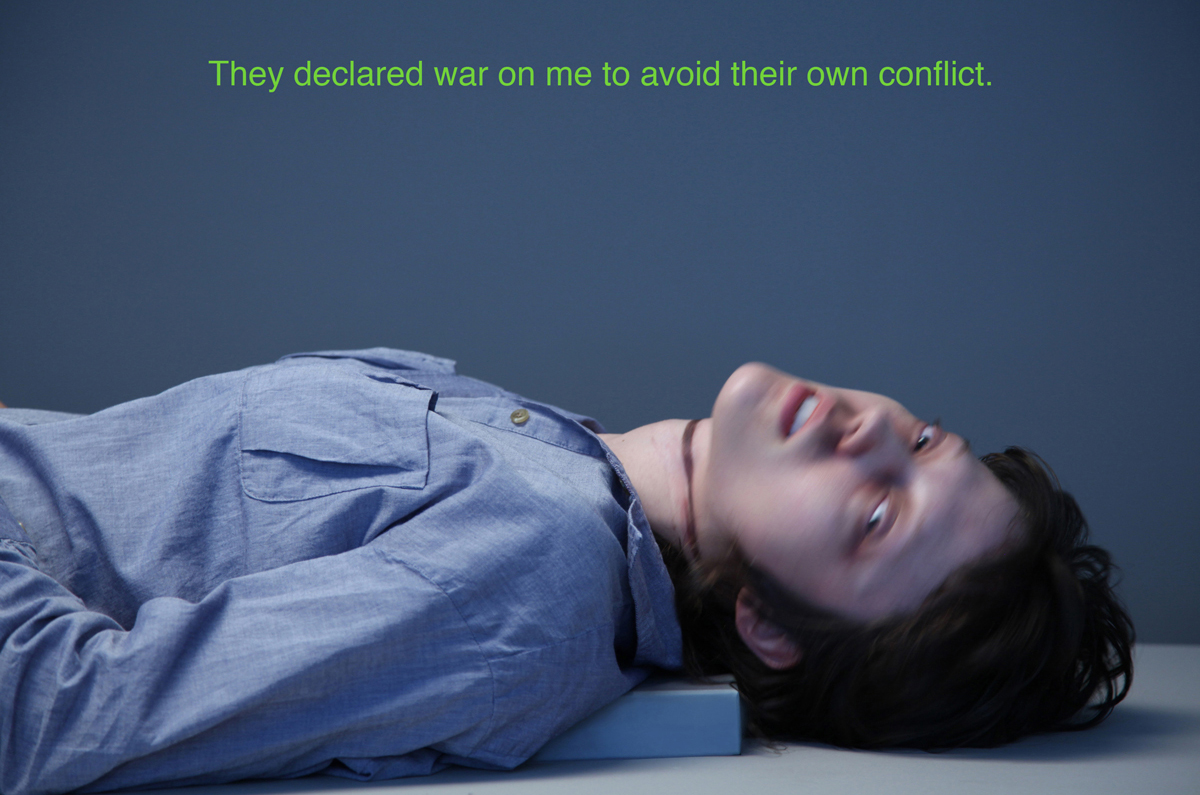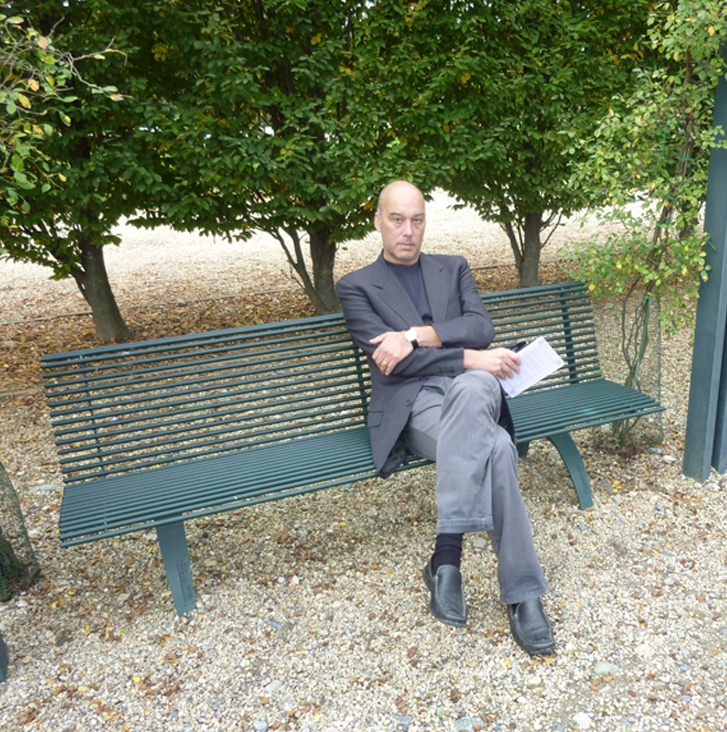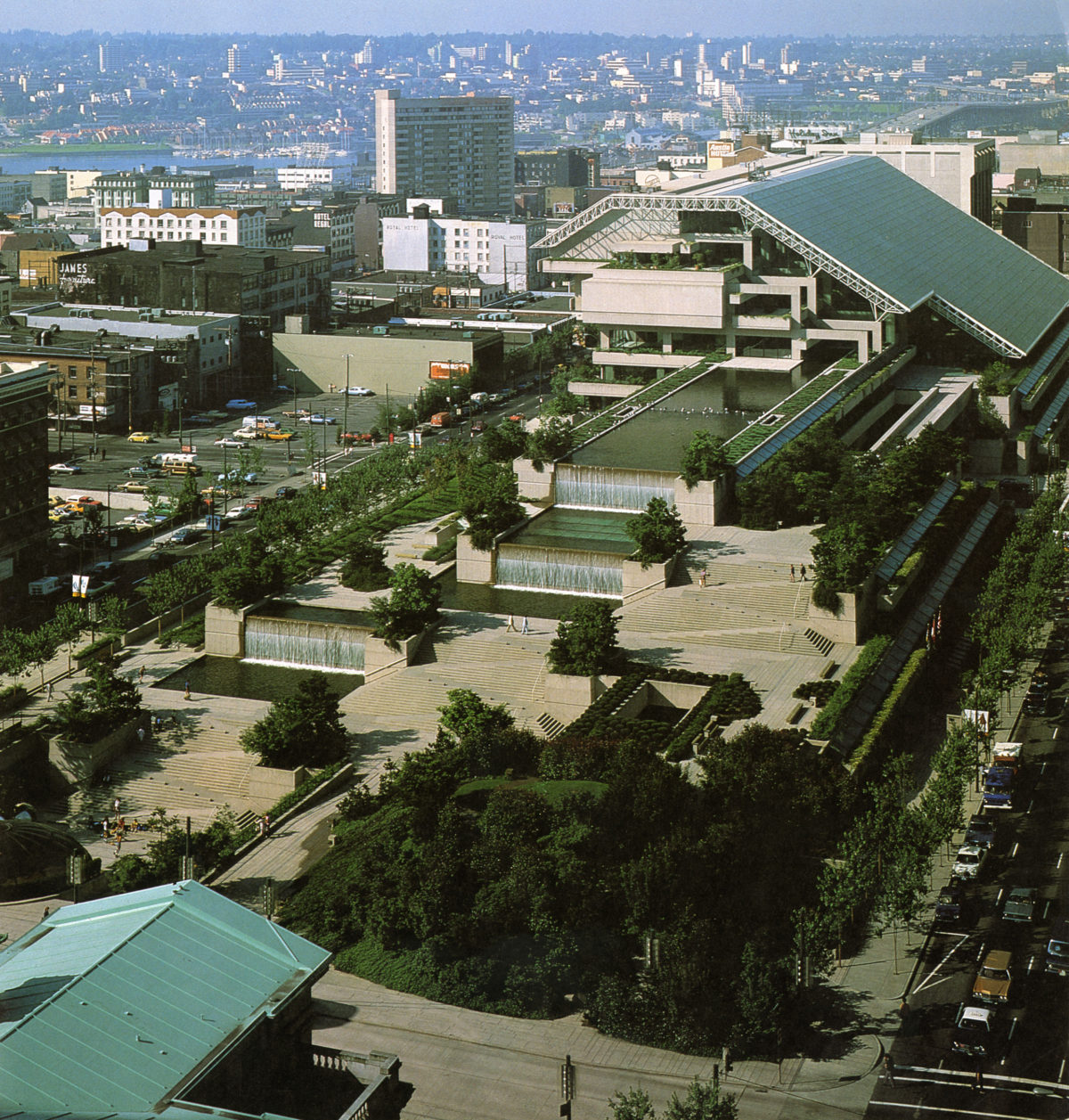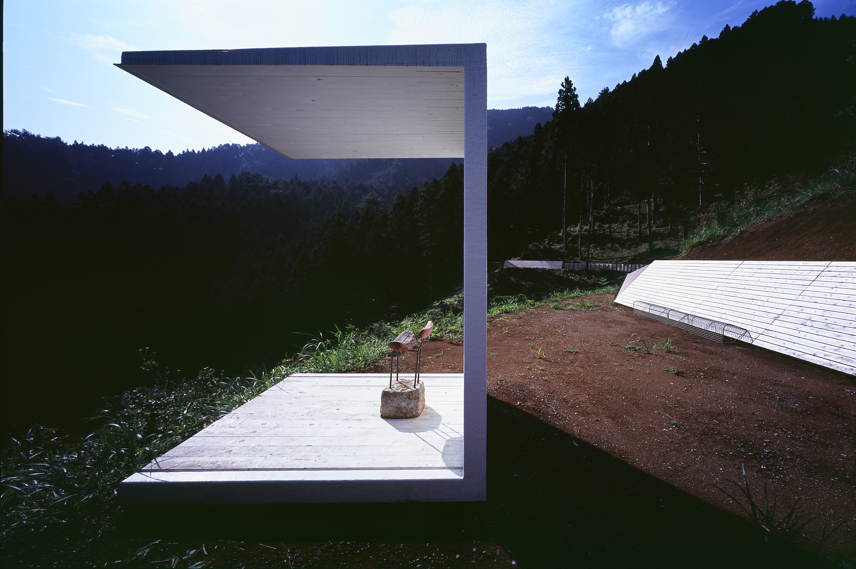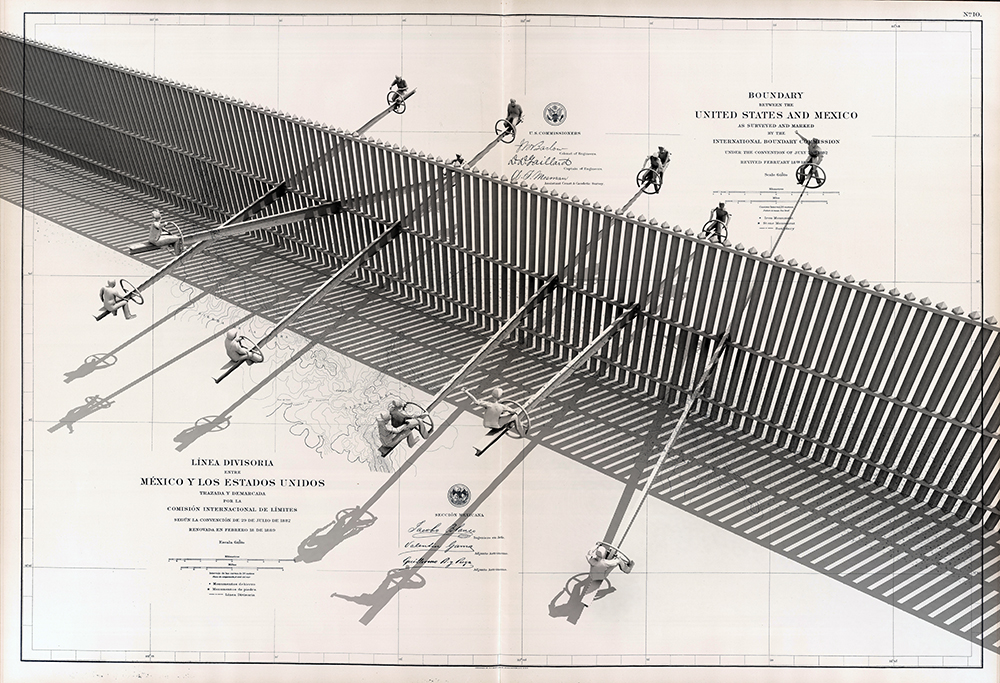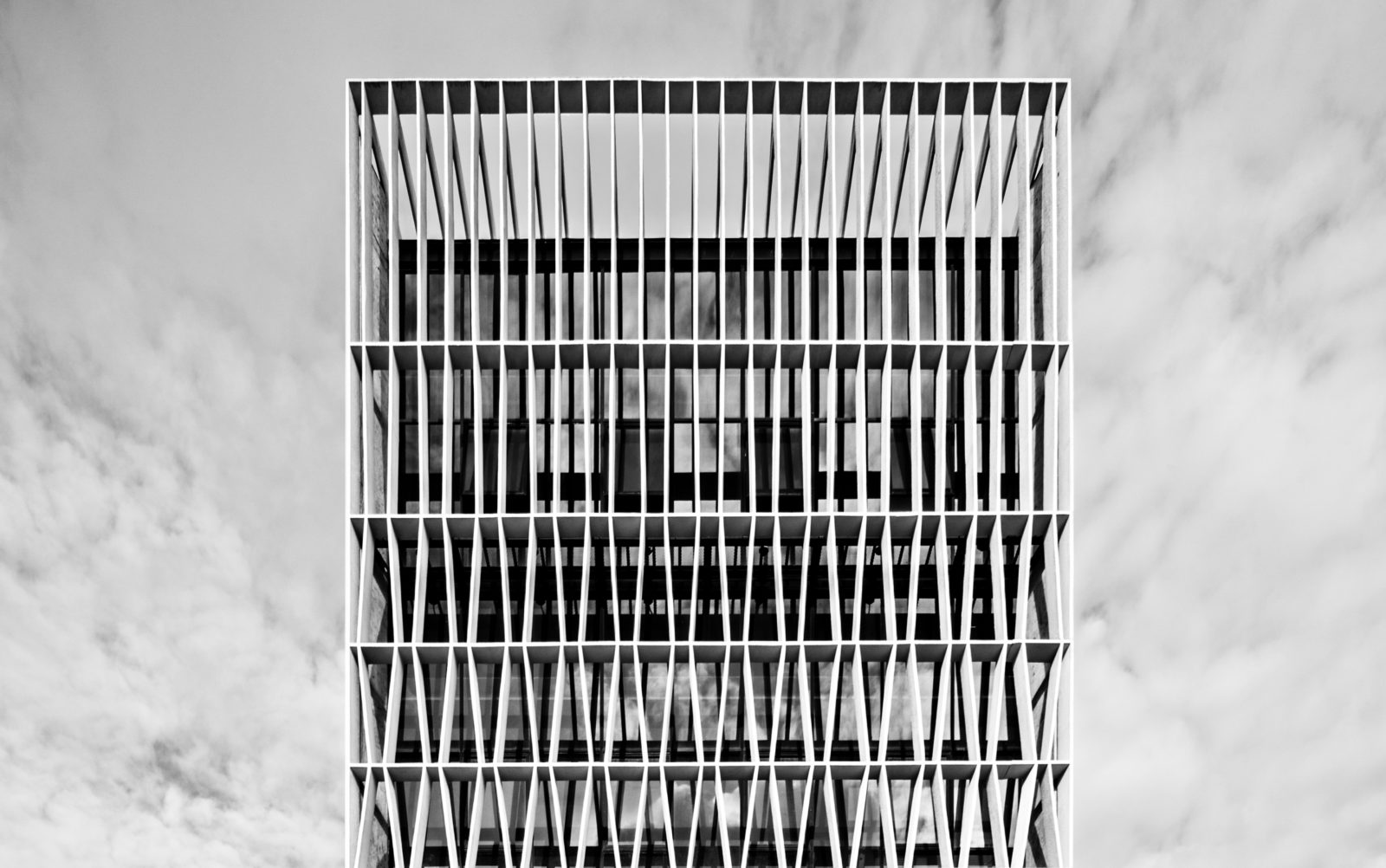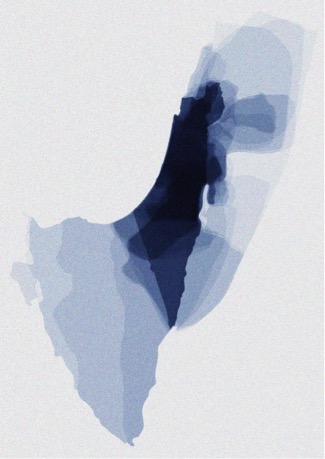Anna Neimark and Andrew Atwood, “Working Buildings”
In this lecture Anna Neimark and Andrew Atwood will present the built work of First Office as a working process. The title, Working Buildings, borrows its form from the more common expression “working models.” While working models tend to be tentative and temporary, built work is often presented as definitive and final. But in an early stage of a young practice, the distinction between the two is often difficult to draw. Built work can appear vulnerable, hesitant, even questionable. The presentation will address models that grow to the scale of buildings and buildings that remain unfinished or uncertain even in their completed state.
Anna Neimark and Andrew Atwood are founders of First Office in downtown Los Angeles. Built projects include a collaboration on the Pinterest office headquarters in San Francisco, a temporary screening room at the MAK Center for Art and Architecture in Los Angeles, and some small houses. Their texts have been published widely, in Log, Perspecta, Project, and Future Anterior, and have been compiled in a Graham Foundation book Nine Essays, published with Treatise Press in 2015. That same year, First Office received the Architect’s Newspaper’s Best of Young Architects prize and became a finalist in MoMA PS1’s Young Architects Program.
Photo (c) Naho Kubota
Junya Ishigami
Please join us for a lecture by Junya Ishigami, founder and principal of junya ishigami+associates, Tokyo.Harry West, “Servant or Svengali: Design, AI and CX”
Today, we are living in the age of customer experience. The internet, smart phones and social networks have given consumers, customers, citizens unprecedented power and control. Companies have to constantly improve their customer experience or we, as consumers, will switch our allegiance. Today, a tweet can kill a brand.
frog designs better customer experiences for companies worldwide, and today, we are incorporating AI into the design of those experiences. We think of AI as just another tool designers can use to make the experience of customers even more seamless, more convenient, more emotionally connecting. Along with other designers and engineers around the world we are making decisions about how to implement AI systems, and quite innocently, with the best of intentions, setting the direction for how even more advanced AI systems will be used in the future.
The immediate impact of our design decisions is often for the good, but the repercussions of our design decisions are more difficult to predict. The same technologies that have given each of us as consumers, customers, citizens such unprecedented access to information and such power over brands, can now be equally be used to manipulate us. AI is getting so smart that it can anticipate our wishes, and when AI understands us better than we do it can manipulate us in ways we are not prepared for. A smart servant can quickly become a Svengali.
At frog Harry leads an extraordinary group of designers, strategists, researchers, technologists and program managers who together improve the daily experiences of people around the world.
frog is a global design and innovation firm. frog works in a broad range of industries including financial services, telecommunications, healthcare, enterprise software, automotive systems, government services and consumer products. We partner with clients to anticipate the future, transform businesses and advance the human experience.
Harry has led design and innovation at MIT, Continuum, Prophet and now frog. He lives in Lexington, Massachusetts and each week works from a different frog studio around the world. He has degrees in engineering from Cambridge University, in Technology and Policy from MIT, and a Ph.D. in robotics from MIT.
Silvia Kolbowski, “This Monument Which is Not One”
Silvia Kolbowski is an artist working with time-based media, whose scope of address includes questions of historicization, political resistance, and the unconscious. The structures of spectatorship are a central concern of all her projects. Her work has been exhibited in many international venues and contexts, including The Taipei Biennial, the Villa Arson, Nice, The Whitney Biennial, New York, and The Hammer Museum, Los Angeles, among others. In addition, she has had one-person exhibitions at The Museum of Modern Art, Ljubljana, the Center for Contemporary Art, Warsaw, The Secession, Vienna, and LAXART, Los Angeles. Kolbowski is on the advisory board of October journal, where she was a co-editor between 1993 and 2000. She has taught at The Whitney Museum Independent Study Program, the CCC program of the Ecole Superiéure d’Art Visuel, Geneva, the Architecture Department of Parsons The New School for Design, NY, and the School of Art at The Cooper Union. Kolbowski has lectured widely, and her writings have been included in many publications, including Artforum, Texte zur Kunst, Documents, Parachute, and October. Since 2013 she has written a blog as a way to extend her art practice into another platform, for which she received a Creative Capital Warhol Foundation Arts Writers Grant Program in 2014.Michael Jakob, “Landscape Architecture and the ‘New Generic'”
Michael Jakob teaches History and Theory of Landscape at hepia, Geneva, and aesthetics of design at HEAD, Geneva. He is a visiting professor at Politecnico di Milano and the Accademia di Architettura in Mendrisio. He is, at the same time, Professor of ComparativeLiterature (Chair) at Grenoble University. Jakob’s teaching and research focus on landscape theory, aesthetics, the history of vertigo, contemporary theories of perception and the poetics of architecture. He is the founder and head of COMPAR(A)ISON, an International Journal of Comparative Literature and the chief editor of “di monte in monte”, a series of books on mountain culture (Edizioni Tarara’, Verbania). He produced several documentary films for TV and has a longstanding experience as a radio journalist.
Michael Jakob published recently: 100 Paysages, Infolio, Gollion 2011; asp Architecture du paysage, Infolio, Gollion 2012; Mirei Shigemori e il nuovo linguaggio del giardino giapponese, Tarara’, Verbania 2012; the swiss touch in landscape architecture, Tarara’, Verbania 2013/ Ifengspace, Tianjing 2015; La poétique du banc, Macula, Paris 2014/ Sulla Panchina, Einaudi, Turin 2014/ The Bench in the Garden, Oro Editions, Bay Area 2017; Cette ville qui nous regarde, b2 éditions, Paris 2015/ Dall’alto della città, Lettera 22, Siracusa 2017.
Jakob is a curator of international exhibitions and the author of documentary films on landscape (Chiappetti o il paradiso perduto, RAI, 2014, and Capri: a lezione di paesaggio, 2016).
This lecture is supported by the Sylvester Baxter Fund.
Kenneth Frampton, “Megaform as Urban Landscape”
Kenneth Frampton was born in 1930 and trained as an architect at the Architectural Association School of Architecture, London. He has worked as an architect and as an architectural historian and critic, and is now Ware Professor at the Graduate School of Architecture, Planning and Preservation, Columbia University, New York. He has taught at a number of leading institutions in the field, including the Royal College of Art in London, the ETH in Zurich, the Berlage Institute in Amsterdam, EPFL in Lausanne and the Accademia di Architettura in Medrisio. Frampton is the author of numerous essays on modern and contemporary architecture, and has served on many international juries for architectural awards and building commissions. In addition to Modern Architecture: A Critical History, his publications include Studies in Tectonic Culture, Labour, Work and Architecture, and A Genealogy of Modern Architecture: Comparative Critical Analysis of Built Form.
Toru Mitani
Is there any essential difference between the detail design of landscape architecture and of architecture? It is very common to discuss detail design in the architectural realm, as evidenced by a number of research works and publications focusing on the rationality and logics of the wooden structure of traditional Japanese architecture that praise its beauty. On the other hand, it is not so easy to find any discussion of detail designs of the traditional gardens in Japan, because most focus on the semantics and symbolization of their style. For example, the stone formation in the dry garden has been explained from the viewpoint of Buddhist symbolization or sometimes of the spiritual representation, and not from the viewpoint of its functional, structural reason, in other words, as a matter of engineering.
Japan-based landscape architect Toru Mitani discusses these and other considerations with reference to the concurrent GSD exhibition featuring his ongoing work and collaborative projects with his firm ‘studio on site.’
Please join us in the Gund Lobby immediately following Toru Mitani’s lecture for a reception to celebrate his exhibition Landscape: A Fabric of Details.
Ronald Rael, “Borderwall as Architecture”
Despite recent attention to wall building as a security measure, the building of barriers along the U.S. – Mexico border is not a new phenomenon. The U.S. Secure Fence Act of 2006 funded the single-largest domestic building project in the twenty-first century and financed approximately 700 miles of fortification, dividing the U.S. from Mexico at a cost of up to $16 million per mile. Today, approximately one third of the 1,954-mile-long border between the U.S. and Mexico has been walled off. Ronald Rael will discuss his book, Borderwall as Architecture: A Manifesto for the U.S. – Mexico Boundary, a timely re-examination of what the physical barrier that divides the United States of America and both a protest against the wall and a projection about its future.
This event is co-sponsored by the Office and Communications and the David Rockefeller Center for Latin American Studies.
Erik L’Heureux, “Hot & Wet”
Erik L’Heureux, 2015 winner of the GSD’s Wheelwright Prize, presents insights from his two years of travel and research for his Wheelwright project, “Hot & Wet.” “Hot & Wet” traces five dense cities across the equator from the large mega-cities of Asia and South America to the mid-scale cities found in India and Africa. Each city confronts rapid population growth, increasing climate change, and extreme developmental pressures. The research follows architecture as a guide, framing the complex intertwining of atmosphere, climate, politics, and history at both the building and urban scale. From the recently burned Pasar Johar market by Thomas Karsten, to diminutive tower of Hassan Vogel, to the vestiges of Harry Weese, to the crafted Golconde Dormitory, and the stunning roofs of Vilanova Artigas, the “Grand Tour” of the torrid zone illustrates that architecture holds critically important agency in the transformation and aspiration of the equator.
L’Heureux’s Pencil Office works on mid-scale building projects that combine the challenges of density, urbanization and specifics of the equatorial city. Each project is driven by the atmospheres of passive ventilation, day-lighting, thermal comfort, and durability. A language of simplicity and material detail produce works of meaning and importance. Pencil Office’s design leadership is by Erik L’Heureux. Erik migrated to the equator from New York in 2003. Despite his cool climate background, he has built a thriving and productive practice, with a specialty working on projects throughout South East Asia. The Office for Equatorial Intelligence in parallel operates as the research wing of his design practice and as an extension of his love for the Equator.
Images from L’Heureux’s Wheelwright Prize travels and research appear below.
Photos from the event
Malkit Shoshan, “Border Ecologies”
Borders shape and consolidate relations between states, people, jurisdictions, political entities, and territories, and they often lie at the center of conflict between them. They are tools entangled in complex socio-political and economic ecologies. While some borders are relatively stable, others are in a constant flow. They regulate economic relations and people’s access to places, resources, and rights.
Borders determine the way our surroundings are organized, inhabited and controlled, and the ways communities relate to one another—while some break through borders to survive, others fence themselves off.
In this lecture, Shoshan will present case studies from FAST’s ongoing investigations and engagements with conflict and post-conflict areas. The concurrent exhibition “Border Ecologies” examines the spatial processes of bordering in conflict and post-conflict contexts. It concentrates on the way borders impact communities and produces new spatial forms
The Foundation for Achieving Seamless Territory (FAST) is an Amsterdam- and New York-based architectural think-tank that initiates and develops cross-disciplinary research, advocacy, and design projects at the intersection between architecture, planning, and human rights. FAST is led by Malkit Shoshan.

